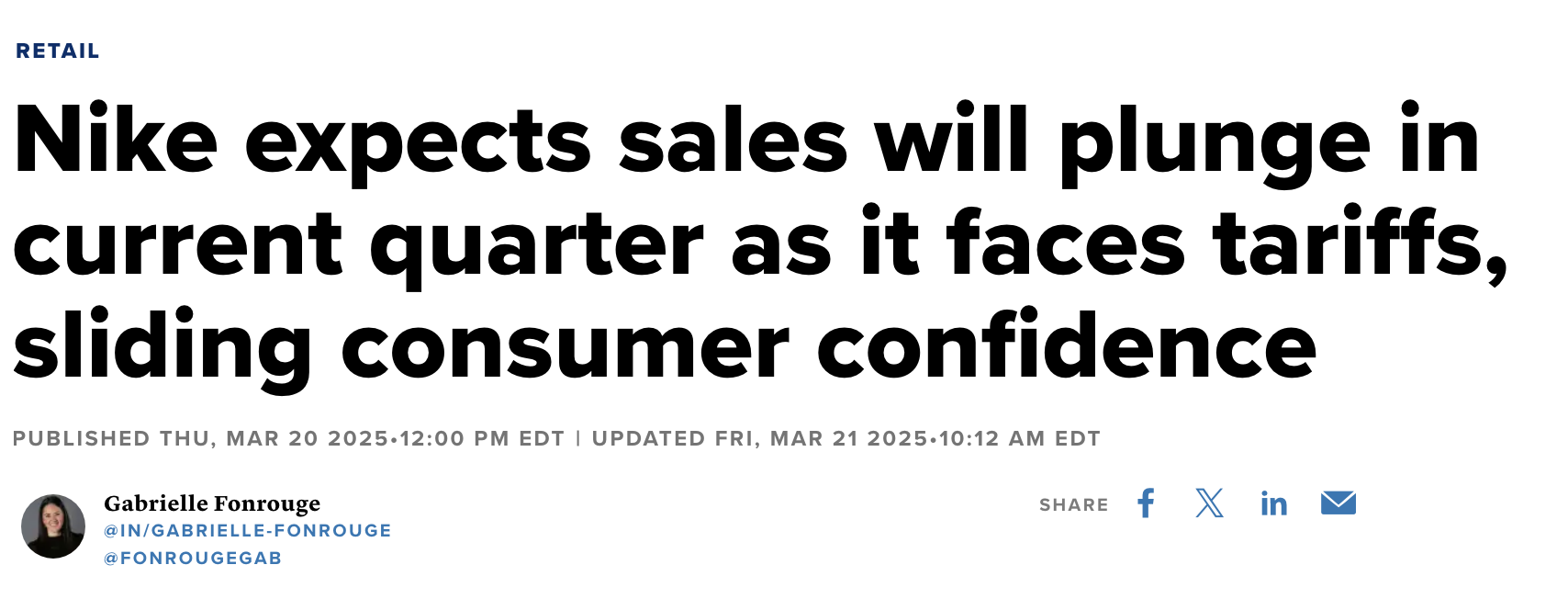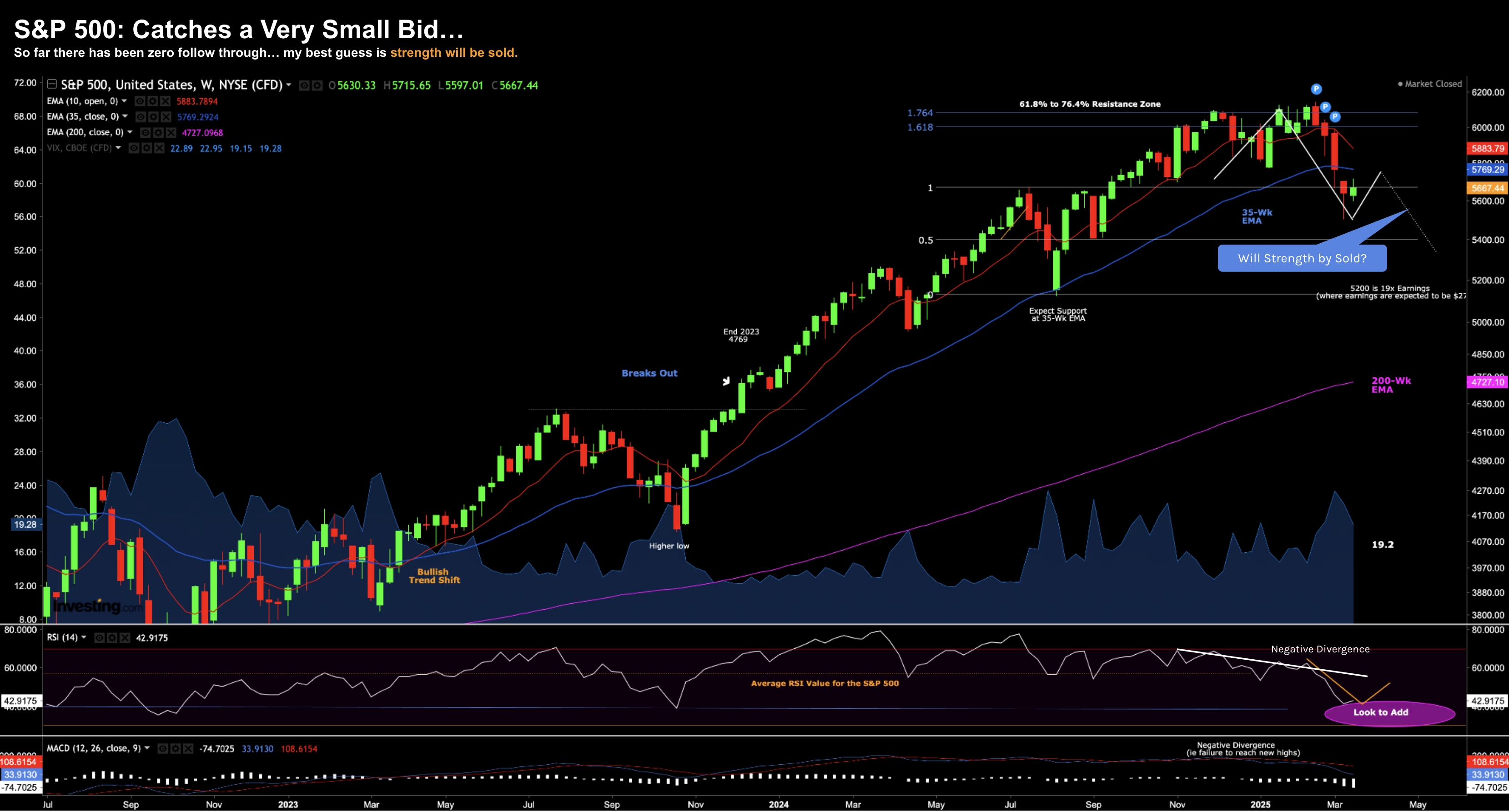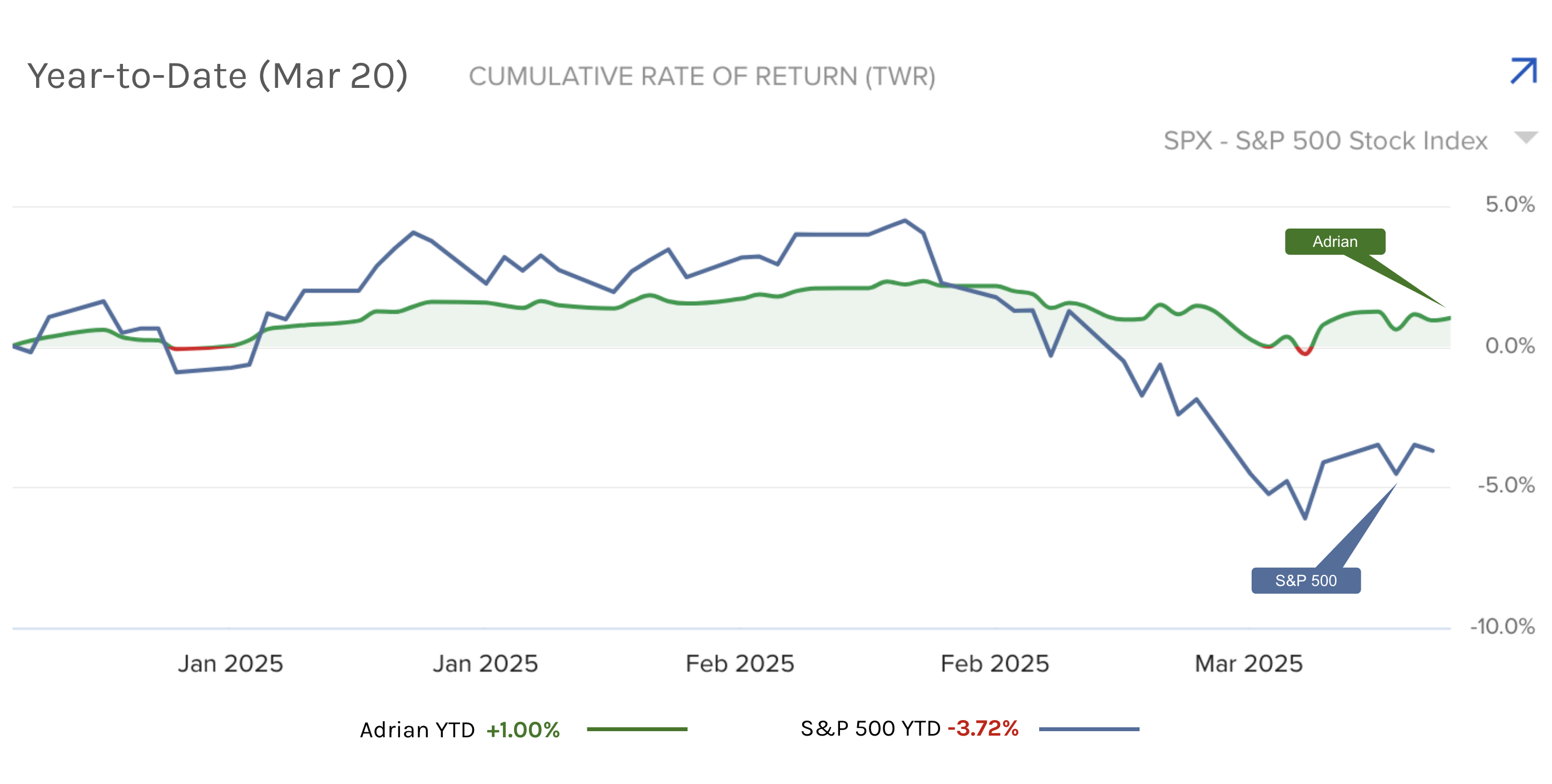Words: 1,423 Time: 6 Minutes
- Retailers continue to warn of slowing sales
- If earnings fall – what does that do to valuations?
- Fed not worried about inflation – but they’re concerned about growth
February 15th I asked this question: “Ready for a Growth Scare?”
The post was not widely read…
Markets were yet to correct… so maybe it was too pessimistic?
Who wants to hear bad news?
Fast forward ~5 weeks and the growth scare has arrived. Now investors are taking notice.
The Fed warned growth is likely to slow this week.
Chair Powell said economists outside of the central bank have generally moved up their estimated chance of a recession, but such a severe economic downturn is still not likely.
“We don’t make such a forecast. If you look at outside forecasts, forecasters have generally raised … their possibility of a recession somewhat, but still at a relatively moderate level … [it] has moved up, but it’s not high,” he said.
And so it should move up (more on why below)
Powell also noted there is also always an unconditional probability of a recession, in the range of one in four at any time.
That said, the Fed downgraded its economic growth outlook while raising its inflation projection.
The central bank now sees the U.S. economy growing at a 1.7% pace this year, down 0.4 percentage points from what it forecast in December.
That’s a feeble number and well below the long term of average of between 2.5% and 3.0%
Core inflation is expected to grow at a 2.8% annual pace, up 0.3 percentage points from the prior reading.
Growth down and inflation up. There’s a word for that… it starts with “S”.
But let’s not mention that.
Retailers Warn of Slowing Sales
Over the past few weeks, I’ve heard a chorus of retailers warning of consumer slowdown.
They are all singing from the same hymn sheet.
For example, a stock that I like – Ulta Beauty (ULTA) – warned of its sales slowing – despite a strong quarter.
Its stock has been crushed as a result.
Dicks Sporting Goods said they had a solid Q4 – however advised they are not guiding above consensus for Q1.
“Why would we?” their CEO said.
Even the low-cost (discount) retailers like Target, Walmart and Costco – the best in the business – have lost ~15% to 20% of their value the past month.
We have not seen a (consumer sentiment) pivot in the retail narrative since COVID.
Lower quality retailers have shed a lot more. Dollar General’s CEO said the “consumer trade down is back”
But here’s the kicker for me…
DoorDash is now offering “buy now pay later” (BNPL) options for food delivery.
If you need to use BNPL to pay for food – you should not be using a service like DoorDash!
Learn how to cook!
This brings us to Nike – yet another poor quarter and terrible guidance.

Nike is a discretionary item.
Buying a new pair of “Jordans, Dunks or Air Force One’s” can always wait another year or two.
The stock is now at 5-year lows – and down 60% from its record 2021 high.
When I put all of this together – we see a weaker consumer.
That’s a concern – as consumption makes up 70% of GDP.
All of this brings me back to my favourite (leading) economic indicator – Real PCE change YoY on a quarterly basis.
What I will be watching for is if we see more than 2% change during Q1 on a year-over-year basis.
That generally tells me a slowdown is on the way.
It may not be a recession – but it doesn’t need to be to see stocks shed at least 20%
Earnings Will Come Down
Recessions are notoriously difficult to predict with any accuracy.
However, the probabilities are certainly higher than where we were a couple of months ago.
And pending what we see with the change in Real PCE at the end of the quarter – I may increase (or decrease) that probability.
But I think it’s higher than what many realize.
Now some will be quick to say ‘but we see job and wage growth – and that doesn’t imply a recession?’
Sure…
But the expenditure side is falling – and that’s your leading indicator.
Employment and wages are always trailing.
Now if we are to see a recession – forget about the double digit earnings growth that many expect.
Generally when we see a recession – earnings contract – they don’t expand.
As I write this – the market expects around $270 to $275 in earnings per share this year (which is double digit growth on last year)
I shared this end-of-year 2025 forecast three months ago (note the EPS column)
| Institution | 2025 | EPS | Fwd P/E |
|---|---|---|---|
| Oppenheimer | 7100 | 275 | 25.8 |
| Wells Fargo | 7007 | 274 | 25.6 |
| Deutsche Bank | 7000 | 282 | 24.8 |
| Soc. Gen | 6750 | 272 | 24.8 |
| BMO | 6700 | 275 | 24.4 |
| HSBC | 6700 | 268 | 25.0 |
| Bank of America | 6666 | 275 | 24.2 |
| ScotiaBank | 6650 | 255 | 26.1 |
| Barclays | 6600 | 271 | 24.4 |
| Evercore ISI | 6600 | 257 | 25.7 |
| Fundstrat | 6600 | 275 | 24.0 |
| Ned Davis Research | 6600 | 254 | 25.9 |
| RBC Capital Markets | 6600 | 271 | 24.3 |
| Citigroup | 6500 | 270 | 24.1 |
| Goldman Sachs | 6500 | 268 | 24.3 |
| JP Morgan | 6500 | 270 | 24.1 |
| Morgan Stanley | 6500 | 271 | 23.9 |
| UBS | 6400 | 257 | 24.9 |
| BNP Paribas | 6300 | 270 | 23.3 |
| Cantor Fitzgerald | 6000 | 267 | 22.5 |
| AVERAGE | 6617 | 268.0 | 24.6 |
With the S&P 500 closing at 5667 – that’s a forward PE ratio in the realm of 21x
But I think that will come down.
For example, the trailing 10-year average PE ratio is 18x.
Let’s now come back to what’s likely to pull these numbers lower – and what I labelled “anti-growth” policies.
This is why markets are having such a hard time.
Repeating some of my language from and earlier post….
In short, when Trump won the election – he was viewed as a pro-growth / pro-business President. For example, two of his growth policies included:
- Lowering taxes (corporate and individual); and
- Removing layers of government regulation
The market was happy with this approach – initially rallying as they saw this as giving incentive to businesses to invest and grow.
Makes sense…
However, of late, the positive sentiment has been overcome by anti-growth headwinds:
- Eliminating (or reducing) illegal immigration (reducing the overall labor force);
- Tariffs – which will likely drive up costs and inflation and reduce quality; and
- Sweeping cuts to government spending
As an investor concerned with managing risk – we must understand that reduced fiscal spending will impact growth.
From here, we need to be careful on our level of risk exposure.
For example, I don’t think you can simply buy something that’s lost “20%” and expect it to rebound to its former highs.
Multiples are likely to come down should consumption (and growth) slow.
If we assume the “E” in “PE” can still hit $275 (which is now at risk) – if we apply an 18x multiple – we get a figure of 4,950
I don’t think anyone has a 4-handle in mind for the S&P 500 this year.
Market’s Not Able to Recover (Yet)
This week markets caught a very small bid…
If you blinked – you missed it.
March 21 2025
Before we start, I always like to remind readers just how far we have come the past two years.
This puts things into much needed perspective.
We should not expect markets to keep adding “20%” year after year – that is not normal.
~8% to 10% maybe.
Not 20%.
Technically I think it could rally to the 35-week EMA zone – or around 5800 (see white line)
But I think this is where stocks may struggle to go further; i.e. I expect any strength to be sold.
The last major low for the S&P 500 was August last year around 5100.
If I were to guess – that’s where I think we go.
This would be a good area to start adding back some exposure – but not taking a full position.
Again, you’re paying a reasonable (fair) value here around 18x earnings (if they are to achieve $275 which is now at risk)
However, you should expect stocks to trade lower if the risks of recession increase.
Again, earnings could contract or come in at very low single digits this year.
For me, I’m still 65% long and watching large cap-tech and some of quality names closely.
They are not where I need them to yet – but they are working their way down.
My performance year-to-date is up 1.0% – but more importantly – largely avoiding the ~16% downside we have seen in large-cap tech.
I say “largely” as I do have exposure to Google (~10% of my portfolio)
That’s primarily what has driven the S&P 500 lower (e.g., names like Tesla, Nvidia, Apple, Microsoft etc)
For now, I will sit tight waiting to take full advantage of any material sell-off (which is still ahead)
Putting it All Together
I was careful not to mention the “S” word earlier…
Growing uncertainty, higher inflation expectations, and falling growth are not what investors want to see.
Put together – it spells stagflation.
Despite Powell saying that’s what he expects – markets heard “rate cuts” and a reduction in “quantitative tightening”
As I mentioned here – any move to pause QT is welcomed
Markets also liked his response to a question about the sharp rise in consumer inflation expectations – suggesting it was an “outlier.”
For now, Powell isn’t worried about inflation.
And I think that makes sense – as weaker consumer demand will help push prices down.
However he seems quite concerned about growth.


